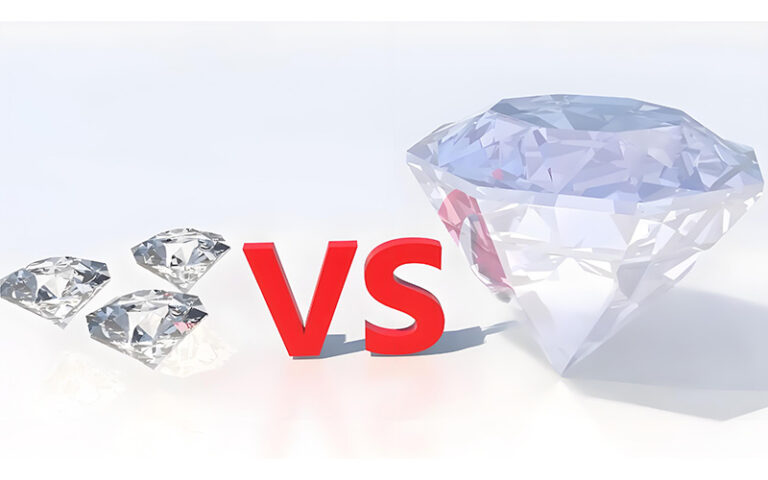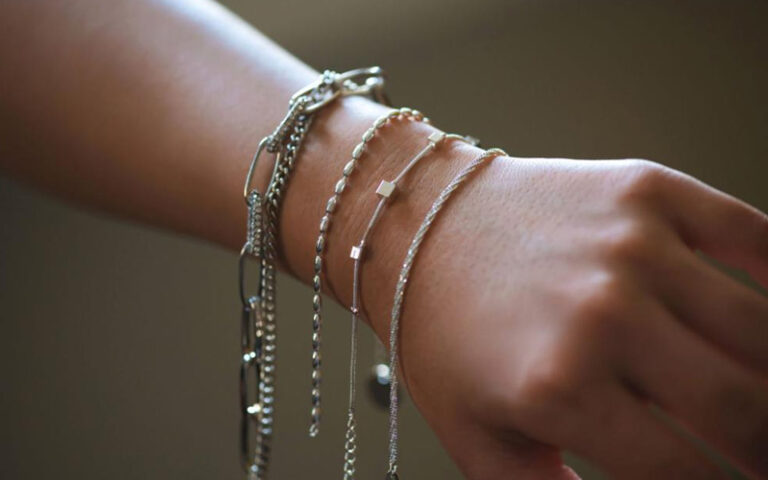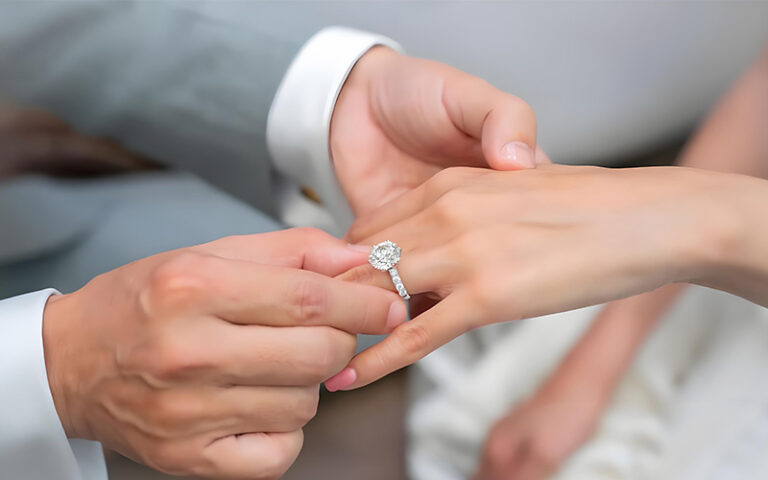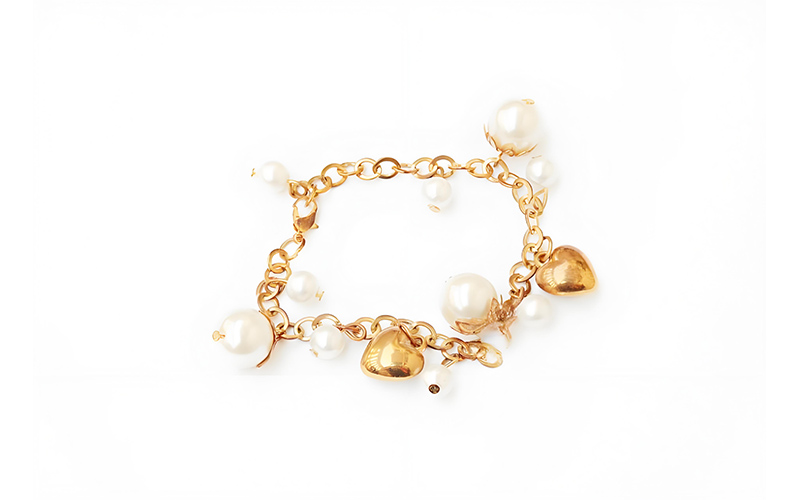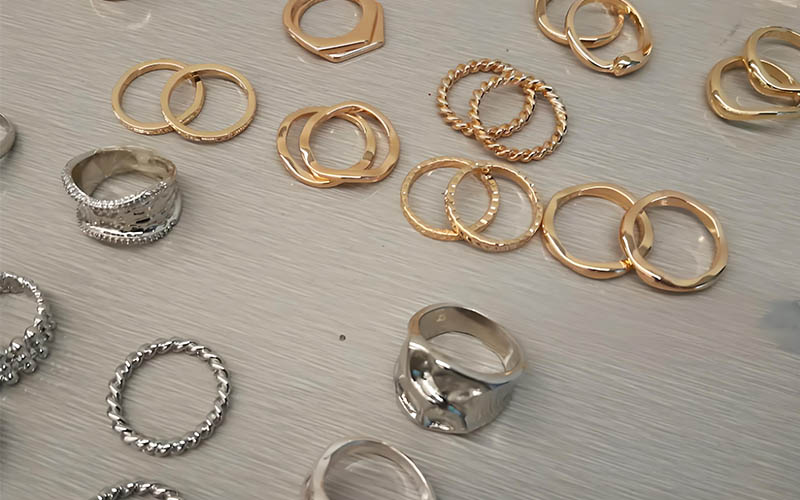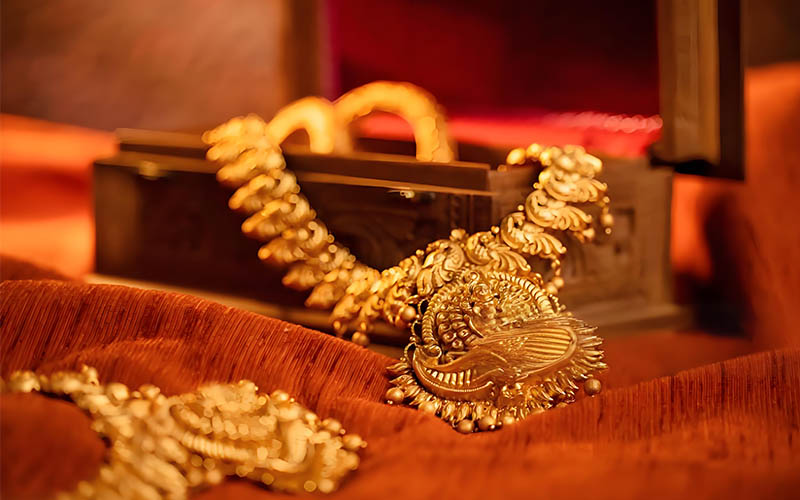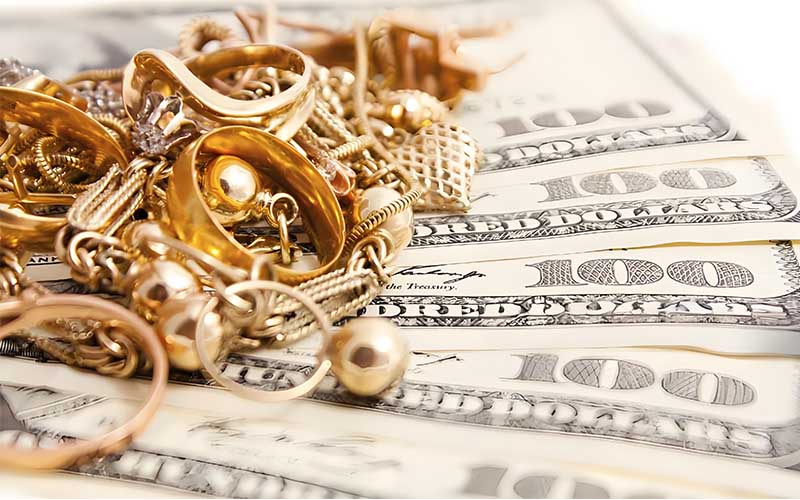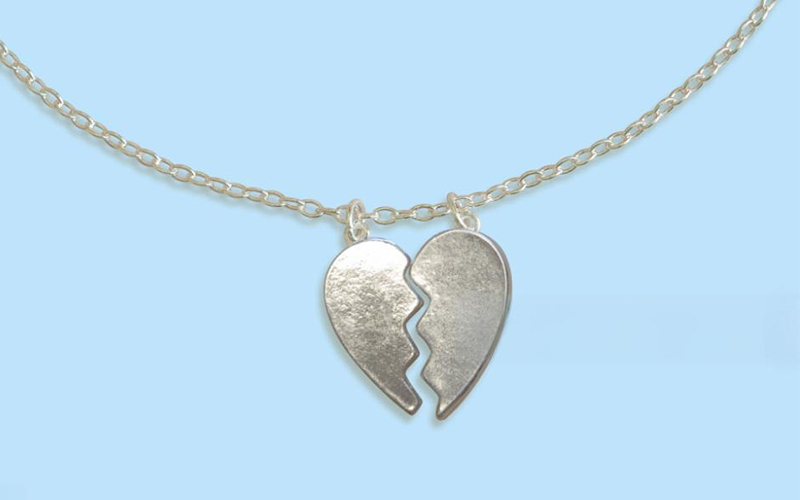
Sterling Silver vs Rhodium Plated: Which Shiny Jewelry Should You Choose?
Hi there! I’m so glad you’re here. For years, I’ve worked with all kinds of silver jewelry. I’ve seen beautiful sterling silver pieces. I’ve also seen amazing rhodium plated jewelry. Lots of folks ask me, “Which is better? Sterling silver or rhodium plated?” It’s a great question! Both types of jewelry and sterling silver can be wonderful. But they are different. This article will help you understand these differences. You’ll learn what sterling silver jewelry is. You’ll find out what rhodium plated jewelry means. We’ll talk about how they look, how long they last, and if they are good for sensitive skin. Knowing this will help you pick the best shiny treasures for yourself or for gifts. And, as someone who makes jewelry, I want you to be happy with what you choose. I want you to have pieces that you love and that last. So, let’s dive in and make sense of rhodium plated vs sterling silver!
Table of Contents
What Is Sterling Silver Jewelry, Really?
I get this question a lot from my customers. What makes sterling silver so special? Well, sterling silver is a very popular metal for making jewelry. But it’s not just pure silver. You see, pure silver is actually quite soft. If we made silver jewelry from pure silver, it would bend and scratch very easily. That would not be good for rings or bracelets you wear every day!
To make it stronger, we mix the silver with other metals. This mix is called an alloy. For sterling silver, the rule is that it must have 92.5 percent silver. The other 7.5 percent is made of other metals. This other metal is usually copper. The copper (or other metals in sterling silver) makes sterling silver much more durable. This means it can last a long time. So, when you see 925 sterling silver, that ‘925’ means it’s 92.5% pure silver. It’s a standard, so you know you are getting good quality sterling silver. As a manufacturer, I always make sure our sterling silver meets this 92.5 standard. We use high-quality copper to make our sterling silver jewelry strong and beautiful.
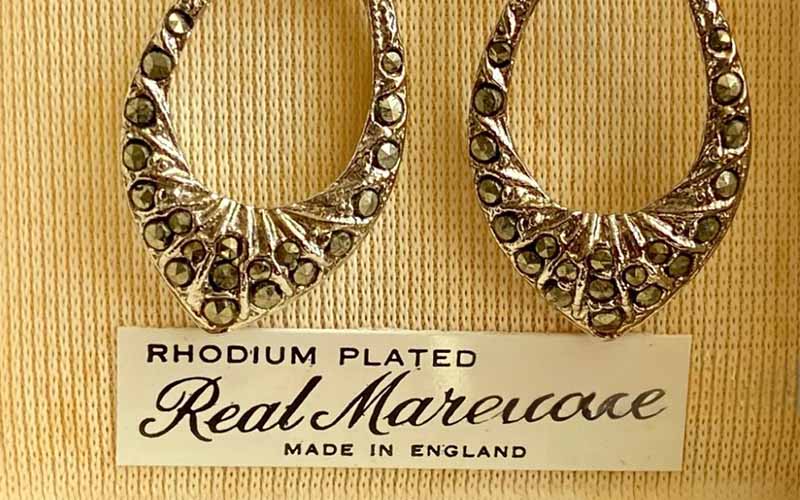
And What About Rhodium Plated Jewelry? What’s That?
Now, let’s talk about rhodium plated jewelry. This sounds fancy, right? Rhodium is a very special metal. In fact, rhodium is one of the rarest and most precious metal choices on Earth. It’s even more expensive than gold or platinum! Rhodium is part of the platinum family of metals. It is super shiny, very hard, and it does not tarnish. That means it stays bright and does not get dark.
So, what is rhodium plated jewelry? It means we take a piece of jewelry, which could be made from sterling silver, brass, or copper, or another base metal. Then, we cover it with a very thin layer of rhodium. This process is called plating. The rhodium layer gives the jewelry an amazing, bright white, almost mirror-like shine. It also protects the metal underneath. Because rhodium is a precious metal and so strong, this plating helps make the jewelry scratch-resistant and prevents tarnish. When we make rhodium plated jewelry, we are very careful. We ensure the thin layer of rhodium is applied evenly so it looks great and offers the best protection. This gives our customers rhodium-plated pieces that are both stunning and durable.
Why Does My Silver Jewelry Get Dark and Tarnish?
Oh, the dreaded tarnish! This is a big problem for many silver jewelry lovers. You have a beautiful sterling silver necklace. You wear it, you love it. Then, one day, you see it’s not so bright. It might look a bit yellow, or even black. This is tarnish. It happens when the silver in sterling silver reacts with things in the air, like sulfur. Even things on your skin, like sweat or lotions, can make sterling silver tarnish faster. Remember how sterling silver is 92.5% silver and 7.5% other metal, usually copper? Well, that copper can also react and cause tarnish. It’s a natural process for sterling silver.
It can be very frustrating, I know. You want your sterling silver jewelry to always look its best. Some sterling silver pieces tarnish more slowly than others. It depends on the exact mix of metals used in the alloy and how you care for it. As a maker of sterling silver jewelry, we are always looking for ways to make our pieces more resistant to tarnish. While all sterling silver can tarnish eventually, good quality sterling silver and proper care can slow it down. But if you really hate tarnish, then rhodium plated jewelry might be a great option for you because rhodium itself does not tarnish.
Is Rhodium Plated Jewelry More Durable Than Sterling Silver?
This is a key question when comparing rhodium plated vs sterling silver. When we talk about durability, we mean a few things. How well does it resist scratches? How well does it resist dents? And how well does it resist tarnish? Sterling silver itself is a fairly durable metal for jewelry, much more so than pure silver. It can last for many, many years if you take care of it. However, sterling silver can get scratched over time. And, as we just talked about, it can tarnish.
Now, let’s look at rhodium plated jewelry. Rhodium itself is an extremely durable metal. It is very hard. This hardness makes rhodium-plated jewelry very scratch-resistant. Much more so than plain sterling silver. And, a huge pro for rhodium is its excellent durability and tarnish resistance. It just doesn’t tarnish. So, a rhodium-plated sterling silver piece will stay bright and shiny much longer without polishing. The rhodium enhances the life of the jewelry. However, there’s a little con: the rhodium plating can wear off. It’s a thin layer of rhodium, after all. How long it lasts depends on how thick the plating is, how often you wear the piece, and what it rubs against. On rings, plating wears off faster than on earrings, for example, especially with frequent wear. We ensure our rhodium plating is of good quality to last longer.
Shine On! Which Looks Brighter: Rhodium-Plated or Sterling Silver?
Everyone loves shiny jewelry! So, which one wins the sparkle contest: sterling silver or rhodium-plated jewelry? Sterling silver has a lovely, warm glow. It’s a classic look that many people adore. It is bright, but it’s a softer kind of brightness. When polished, sterling silver looks wonderful. Its shine is beautiful in its own way.
But if you want a super bright white, almost dazzling shine, then rhodium-plated jewelry is the winner. Rhodium metal is highly reflective. It gives jewelry a brilliant, mirror-like finish. This is why rhodium plating is often used on white gold and platinum jewelry too – to give it that extra pop of brightness and a stunning bright white finish. So, rhodium-plated sterling silver will look much shinier and whiter than unplated sterling silver. The rhodium layer really makes a big difference in the visual “wow” factor. If you want your silver jewelry to look like platinum but without the higher price, rhodium plated jewelry is a great choice.
I Have Itchy Skin! Is Sterling Silver or Rhodium Plated Jewelry Hypoallergenic?
This is a big worry for many people. “Will this jewelry make my skin red or itchy?” This is an allergy problem. The good news is that both sterling silver and rhodium plated jewelry can be good choices for people with sensitive skin. Sterling silver itself, the 92.5% pure silver part, is hypoallergenic. This means it usually does not cause skin reactions. The problem can sometimes come from the other 7.5% metal in the alloy. If this metal is nickel, it can trigger allergies for some people. Nickel is a common cause of skin irritation.
At our company, we are very careful about the metals used in our sterling silver. We avoid nickel to make sure our sterling silver jewelry has good hypoallergenic properties. So, our sterling silver is generally safe. Now, what about rhodium plated jewelry? Rhodium itself is a hypoallergenic metal. It’s very unreactive. So, when jewelry is plated with rhodium, the rhodium layer acts as a barrier between your skin and the base metal underneath. This is great! Even if the base metal (like a lower-quality alloy, brass or copper) might normally cause a reaction, the rhodium plating can protect your skin. So, high-quality rhodium-plated jewelry, especially rhodium-plated sterling silver, is an excellent hypoallergenic option. Rhodium is also known for being kind to skin.

What Are the Big Differences Between Rhodium-Plated and Sterling Silver?
Let’s sum up the main differences between rhodium-plated and sterling silver. First, the look: Sterling silver has a warm, classic shine. Rhodium plated jewelry has a very bright white, mirror-like shine, often looking like white gold or platinum. Second, tarnish: Sterling silver can tarnish over time and needs polishing. Rhodium plated jewelry is highly resistant to tarnish, so it stays bright.
Third, durability: While sterling silver is a metal that is quite strong, it can scratch. Rhodium plated jewelry is more scratch-resistant thanks to the hard rhodium layer. However, the con is that the rhodium plating can wear off over time, while solid sterling silver is sterling silver all the way through. Fourth, care: Sterling silver needs regular cleaning with a soft cloth to remove tarnish. Rhodium plated jewelry needs gentler care to protect the plating – avoid harsh chemicals and too much rubbing. Finally, cost can be a factor. Rhodium is a rare and expensive precious metal, so rhodium-plated sterling silver might cost a bit more than plain sterling silver pieces. But many find the benefits of rhodium plating worth it.
Can You Get Rhodium Over Sterling Silver? Is That a Good Idea?
Yes, you absolutely can! And in my experience as a jewelry maker, getting rhodium over sterling silver is often a fantastic idea. This combination gives you the best of both worlds. You start with a quality base metal – sterling silver. We know sterling silver is one of the best metals for making jewelry. It’s precious and has a good feel. Then, you add a thin layer of rhodium on top.
What are the benefits? Well, the rhodium enhances the sterling silver base. It gives the sterling silver jewelry that super bright white, reflective look. It provides excellent durability and tarnish resistance, so your sterling silver pieces won’t get dark and will resist scratches better. Plus, the rhodium plating adds an extra layer of hypoallergenic protection. So, sterling silver with rhodium plating is a very popular choice. Many of our customers who love sterling silver but dislike the tarnish issue are very happy with rhodium-plated sterling silver. It keeps their silver jewelry looking new for much longer. The only thing to remember is that the rhodium plating can wear off eventually and might need to be redone after some years if you want to keep that perfect look.
How Do I Take Care of My Sterling Silver and Rhodium Plated Pieces?
Taking good care of your jewelry will help it last longer and look beautiful. For sterling silver jewelry, the main thing is to fight tarnish. When you are not wearing your sterling silver, store it in an airtight bag or a jewelry box. This helps keep the air away and slows down tarnish. Clean it gently with a special soft cloth made for silver. Avoid harsh chemicals like bleach or strong cleaners. If it gets very tarnished, you might need a good silver polish. Remember, regular, gentle cleaning is better than one big, harsh cleaning.
For rhodium plated jewelry, including rhodium-plated sterling silver, care is a bit different. You want to protect that thin layer of rhodium. So, avoid rubbing it too hard. Clean it with mild soap and water, and then dry it gently with a soft cloth. Don’t use silver polishes or abrasive cleaners on rhodium-plated pieces, as these can wear away the plating faster. Also, take off your rhodium plated jewelry before swimming in pools with chlorine or using strong chemicals. The rhodium layer is durable, but being gentle will make the rhodium plating last as long as possible. Proper care means your rhodium-plated jewelry will keep its bright white shine.
So, How Do I Choose Rhodium or Sterling Silver Jewelry for Me?
So, we’ve looked at rhodium plated vs sterling silver. Which one should you choose? It really depends on what’s important to you. If you love the classic look of silver, don’t mind a bit of polishing now and then to remove tarnish, and want a piece that is solid precious metal all the way through, then traditional sterling silver jewelry is a great option. It’s beautiful and has been loved for ages. Many of our sterling silver pieces are made to be very tarnish-resistant.
However, if your biggest concerns are avoiding tarnish completely and having a super bright white, shinier, and more scratch-resistant finish, then rhodium plated jewelry might be your best bet. This is especially true if you’re getting rhodium-plated sterling silver, as you get the quality of sterling silver with the added benefits of rhodium. Rhodium-plated jewelry is a great choice if you want low-maintenance shine and good hypoallergenic properties. Think about how often you’ll wear the piece and what look you prefer. Both types of jewelry have their pros and cons. As a manufacturer, we offer both high-quality sterling silver and expertly rhodium-plated sterling silver so you can find the perfect piece that you’ll love for years to come. We want you to feel confident and happy with your choice of metal.


